Food halls are back in town, with a surge of new openings in the UK following the burgeoning trend in Europe and the US. And the modern take on the hallowed halls of the past is all about the experience
No sooner had the ink dried on the bankruptcy papers than the flagship BHS store on Oxford Street was being casually carved up.
By September, Polish fashion retailer Reserved had opened the doors to its 32,000 sq ft share of the historic building, with supermodel Kate Moss pictured swanning into the prime London real estate dripping in designer gear. Two months later, plush crazy golf and cocktail venue Swingers announced it had snapped up another 20,000 sq ft unit alongside, set to launch later this month. And then in January came news of the latest tenant.
The brainchild of former property investor Andy Lewis-Pratt and restaurateur Simon Anderson, new company Market Halls confirmed it would be opening a 36,000 sq ft food hall on the site - the biggest in the UK - featuring 25 restaurants, four bars, demo kitchens and 10,000 sq ft of independent retail, complete with butchers, bakers, cheesemongers “and candlestick makers,” laughs Anderson.
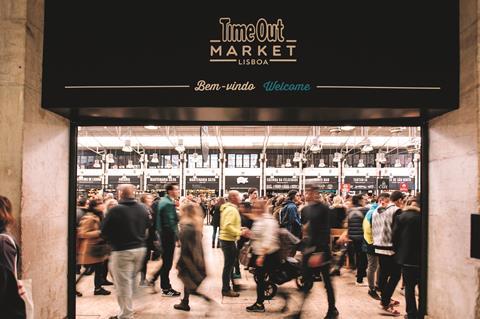
A very European success story
For hundreds of years, the communal food hall has been a staple across mainland Europe, but in the past two decades many sites have seen elaborate overhauls. One of the most successful is undoubtedly the Time Out market in Lisbon, an enclosed food hall with all manner of cuisines, from fine dining to street food, in a communal setting.
Opening in 2014, the market now attracts more than three million visitors a year, making it the city’s number one tourist attraction, say Cushman & Wakefield. This success isn’t an isolated case, either.
Ten new venues opened in 2014 alone, say the real estate agents, including Mercado de Platea in Madrid, El Nacional in Barcelona and Copenhagen Street Food in the Danish capital. And more than 20 have opened since then with many more in the pipeline, including those planned for here in the UK.
It won’t be the only new food hall the pair are bringing to London either, with the company announcing two more confirmed sites in the capital and three more “to be announced” across the UK. The second will open next month in Fulham’s Edwardian underground station, while the arcaded bays of Victoria Terminus Place will house a third.
The project has been in the planning stages for 18 months, says Anderson. “It came about from watching this resurgence of food halls around the world. You’ve seen them grow all around Europe, and exponentially in America. On one research trip we visited 18 food halls in two days, and that was just in New York.”
According to research by real estate agents Cushman & Wakefield, the number of food halls across Europe has already exceeded 100, with double that figure, totalling over 4.3 million sq ft, in the planning pipeline for the next decade, including a number emerging here in the UK. “We’re tracking 16-18 new food halls planned in London for the next few years and we’ll see even more as this whole sector balloons,” says Thomas Rose, partner at the firm. But why the sudden appetite for the food hall? What does it offer over and above traditional retail? And what exactly is a food hall, anyway?
The original ‘food hall’
It’s a good place to start, given that the definition has changed dramatically in recent years, at least in the UK. Traditionally here the term has conjured up the lavish food retail on offer at the likes of Harrods, Fortnums and Selfridges, housed within department stores and entirely owner operated.
For Harrods it “refers to the original architectural space created for selling food,” says director of food and restaurants Alex Dower, with its original food department “functional and compact” before expanding in 1902 to three food halls. “It’s ultimately about providing the finest quality product in the ultimate retail setting.
“More than just a transaction, the food halls offer a sensory experience, a buzz and an air of celebration for the ingredients, combined with the grandeur of the environment.”
For Fortnum & Mason, its flagship food hall in Piccadilly “has always been a hub of foodie activity - as the consumer has become more interested in the provenance of their food, we have enlightened them with tastings and activations,” adds commercial director Lucy Williams. “We bring the food hall to life with plenty of storytelling and visiting producers who help us to share expertise.
“You may wander down our atrium stairs one evening and find our oyster and champagne stall treating our customers or, come harvest, see a famous face auctioning our rooftop honey for charity.”
For all the history caught up in their hallowed food halls, both high-end retailers have evolved the concept too. Harrods unveiled its first revamp for 30 years in November, adding a new roastery and bake hall, “compelled by our history in food retailing and our continued commitment to the food industry,” adds Dower, and one that attempted to draw in a growing pool of foodie Londoners too. At Fortnums “there are too many changes to list,” says Williams, though arguably its most popular has been a blini machine churning out canapés in seconds. “Customers are always transfixed.”
“Food halls have the potential to offer really great, vibrant atmospheres, which is what people want”
But for all their attempts at evolution, these department store-style food halls don’t reflect the new direction of travel in the UK, believes Anderson.
“We envisage a food hall as a permanent enclosed space drawing together established, award-winning restaurants to be enjoyed in a communal space” alongside “a mixture of food retail and experience.” Owners simply provide the space while independent brands “promote themselves further” and dictate range, price and offers in a way that wouldn’t be possible at these high-end retailers. “The great thing about it is that by pooling resources or by us providing this place, the independents can get into areas where traditionally they would never have had a foothold.”
For Rose, the likes of Mercato Metropolitano in Elephant & Castle - an Italian-style food hall with small-scale farmers, local producers and on-site workshops - fits the bill of this new approach. So does London Union, with a permanent location in Canary Wharf housing all-day drinking and eating outlets.
And even though Italian retailer Eataly “does not define itself as a food hall, more a marketplace”, many elements of its plan for a first UK site in Bishopsgate, opening in 2020, capture similar elements featuring retail, restaurants, bars, on-site production demonstrations and a cooking school reaching across 42,000 sq ft.
This template for a contemporary food hall follows a style “alive and kicking 100 years ago” in continental Europe, says Rose, and which has now been emulated and evolved by US operators before its recent shift to the UK (see box, right). “America took the European concept, adapted it and modernised it and refined it and now we’re taking their lead and going from there,” he says. The reason? “I think it all comes down to the experience economy. Food halls have the potential to offer really great, vibrant atmospheres, which is what people want.” In many ways the opportunity for retail stemming from this trend piggybacks on the burgeoning eating out market. “The propensity of millennials to eat out is more than they spend on eating in and the nature of this design creates that opportunity.”
Capturing a culture
For Anderson, “the rise in food as more than just fuel” is crucial for the growing popularity of the food hall. “Food is now so ingrained into people’s psyche as entertainment, hobby or passion that people are drawn to food and everything about it as part of daily life.
“I plan half my holiday around a restaurant I want to eat at. People wanting to experience those things on a weekend or night out means we can pull them together into one space - it’s a great way to capture a city or a culture very quickly.”
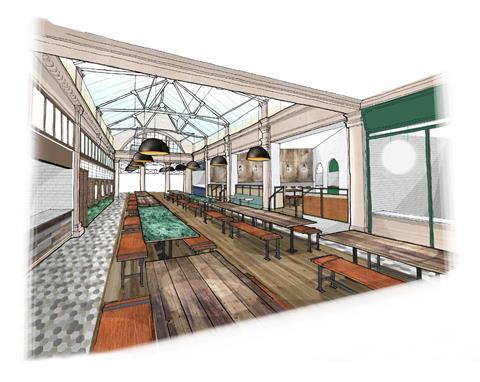
The plan for the biggest food hall in the UK
By autumn 2018 Market Halls plans to have its first three London food halls open for business. The first will be Fulham next month housed in the entrance hall of its Edwardian underground station, with 10 kitchens, one bar and seating for 180. The second, in Victoria Terminus Place, will be up and running by summer with 14 kitchens, three bars and seating for 300. And last to open – but the largest by some way, covering 36,000 sq ft – will be the branch setting up shop in the former flagship BHS store on Oxford Street, housing a mix of local producers, retailers, restaurants, street food vendors, four bars, event spaces and a demo kitchen.
Founders Simon Anderson and Andy Lewis-Pratt spent the past 12 months visiting sites around the world including New York, Amsterdam, Barcelona, Madrid, Lisbon and the UK “to ensure that the food halls will be the most significant and exciting the country has ever seen”.
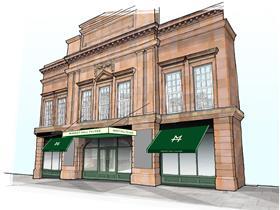
“We want to create permanent hubs that work for the community, something we haven’t seen in the UK,” says Lewis-Pratt. “The majority of buildings we are working with were originally designed as bustling cultural or commercial hubs, but have been lying empty. We wanted to bring these sites back to life.”
Local, independent, artisan brands will be offered space among the plethora of producers, says Anderson, while bars will shy away from large breweries to work with craft brands instead.
It will appeal to all audiences, he believes. “The core will be the key millennial crowd but we’re trying to make sure the offer appeals to families” with children’s areas planned. “And because they are enclosed, proper plates and cutlery, and not exposed to elements as with a street food venture, it could appeal right through to the much older crowd too.”
The concept isn’t limited to urban areas either. “Family farm diversification venture” Suffolk Food Hall was set up 10 years ago and now brings in around £3m in sales with its array of local independent producers, an events programme of tastings and workshops and an on-site café.
Creating a food hall, rather than a farm shop, was a very conscious decision, says owner Oliver Paul. “At that stage there was a slight lack of sophistication generally across farm shop offerings. It was a little sawdust floor and cobwebs, which was part of their charm. The real point of difference between a farm shop and food hall is the level at which service is provided, but more importantly the range of food genres and departments available.” In 2012 it doubled its footprint with a new restaurant and nine commercial kitchens, used by 11 local producers.
Paul estimates that though 70% of trade comes from local postcodes, the remaining 30% is further afield, driven by the same appetite for leisure and recreation that the emerging city centre food halls hope to capitalise on. “The golden opportunity for the food hall offer is that it’s much more of a discretionary activity and not competing in the click economy environment where people are very price-conscious,” he adds.
“It always surprises me the sort of people who’ll happily spend £100 treating themselves on a product because they’re on a day out. By being a food hall, which is a destination and experience in its own right, people are prepared to spend.”
This fact has piqued attention among supermarkets and convenience chains, struggling to stem the flow of shoppers from stores to online, and to curb a declining average basket spend as the weekly shop is ditched in favour of frequent top-ups. In an effort to turn their stores into destinations, Waitrose has installed wine bars and trialled supper clubs, Tesco has toyed with all manner of concessions, from artisan coffee to high street fashion, and even Morrisons has embraced the sushi trend.
Staff from the East of England Co-op HQ down the road “regularly come and look at our proposition,” says Paul. “Having spoken to CEOs I know they are cloning what we’re doing. They’ve been hell-bent on beating each other up on price, and as soon as they got into that game they lost their point of difference, so they need to find ways to entertain customers and bring them back. One way is to adopt a food hall experience.”
Products with a narrative
“It’s the right thing to do,” believes managing director at Appetite Me Rob Tate. “People are going to the normal supermarkets and seeing the same old things. In farm shops and food halls they’re seeing more exciting products, different styles of brands, trendy packaging, clearer ingredients, and products telling a narrative.”
Retailers could even look to split shopfloors, suggests Rose, with areas dedicated to emulating this food hall experience by introducing local producers tailored to each store. “They need to have one eye to local and independent and ensuring they have soul. Food halls could give supermarkets the opportunity to add local elements to stores by subletting kiosks to external operators.” It’s an approach already trialled by Wholefood in the US, with its new 365 format.
But for Paul there are elements of a food hall on which supermarkets simply can’t compete. “What we would be prepared to do for our customers is way beyond what the supermarkets would entertain,” says Paul.
“The level of service and bespoke preparation we’ll provide to customers is far greater than they’d be interested in as they rely on economies of scale and repeatable models. We rely on tailoring everything for each customer. That’s the opportunity for food halls, to have that point of difference in an internet environment.”
British appetites for the format show no sign of abating, anyway. On top of new planned sites, Tate hints at plans to create food halls in major shopping centres too.
Set to directly neighbour the likes of M&S and Waitrose, it brings the threat to traditional retail startlingly close to home for the supermarkets.
In 2018, shoppers don’t only want food handed to them on a plate if they’re going to drag themselves away from their computer, they want experience, theatre and interaction too. All elements that the evolving food hall concept serves up in abundance.









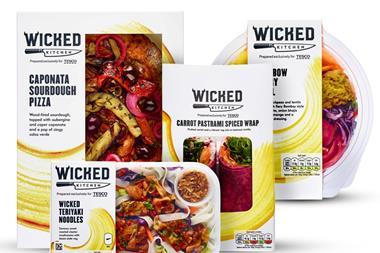
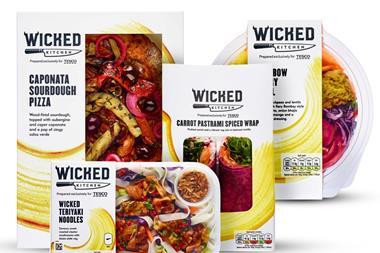
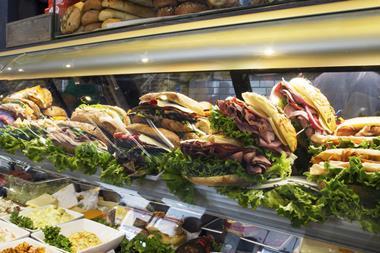
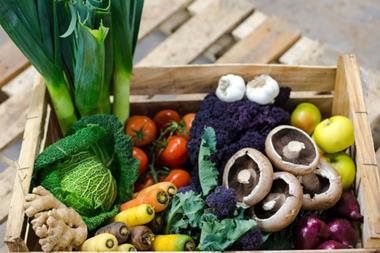






No comments yet